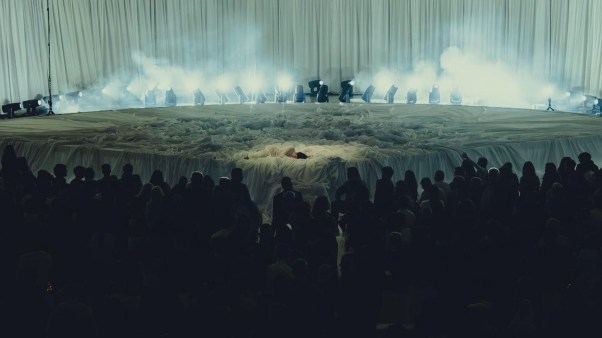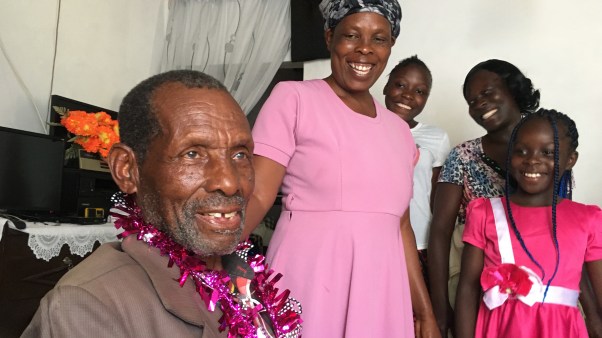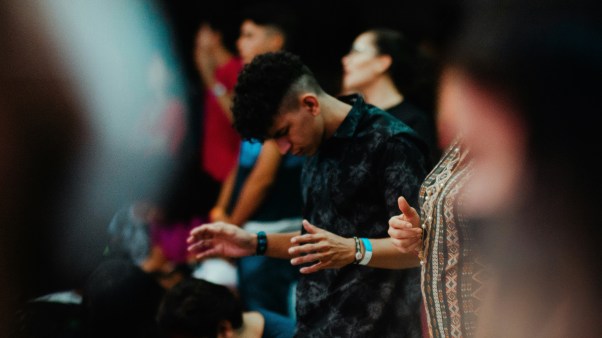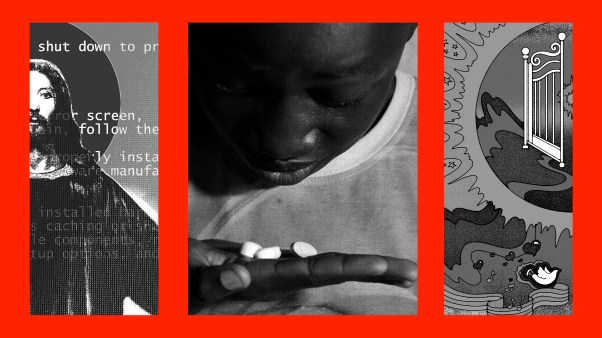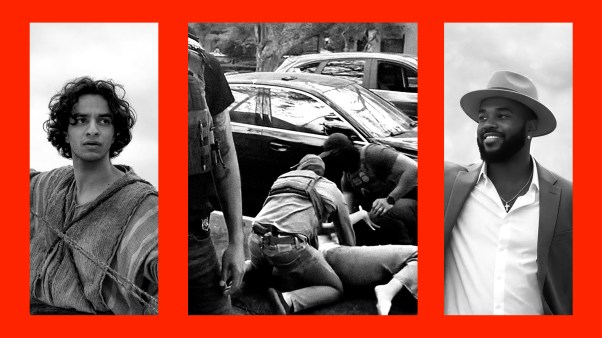After 1,000 days, Miriam Vargas still believes that God is watching over her and her two daughters as they hide from deportation inside First English Lutheran Church in Columbus, Ohio. But she is also still afraid.
“I do have that fear always,” she told Christianity Today through a translator, “that somebody is going to come into the church and take me away from my family.”
Vargas is one of about 50 women across the US who sought asylum in churches, as a revived sanctuary movement emerged in response to President Donald Trump’s efforts to increase deportations and get tough on immigration, illegal border crossings, and refugees. Now that Joe Biden is in the White House, proposing a kinder, more generous immigration reform, the latest chapter of the sanctuary movement may be drawing to a close.
Vargas spent 31 months worrying that Immigration and Customs Enforcement (ICE) could still detain her; separate her from her two American-citizen daughters, ages 7 and 11; and send her back to Honduras, currently one of the most dangerous places in the world. In March, she had been granted an “order of supervision” from ICE, saying she won’t be deported. But she, and others like her, are not ready to breathe just yet.
Vargas doesn’t love living inside a church. “It’s being in four walls 24-7,” she said. But she will wait a little longer.
Peter Pedemonti, co-director of the New Sanctuary Movement in Philadelphia, said that legal challenges to the deportation freeze and political opposition to Biden’s day-one immigration bill have reminded immigrants that while change may be coming, it’s not here yet. They have reasons to stay worried even as they find new hope.
ICE, after all, didn’t start with Trump. The government agency was founded in 2003 under George W. Bush, as part of the nation’s response to terrorist attacks on New York City and Washington, DC. Pedemonti said ICE also is seen by many immigrants and immigrant advocates as “a rogue agency” that may or may not follow orders. Asylum seekers were still being sent back to war-ravaged Cameroon in late 2020, for instance, despite the incoming president’s call for a halt to deportations and evidence that Cameroonian deportees were being placed in maximum-security prisons upon their return.
The fear and trauma run deep for these immigrants, Pedemonti said: “When they talk about ICE, they talk about being persecuted.”
To them, it’s kind of a miracle the immigration agents won’t enter churches. There’s certainly no law forbidding it. The agency has just decided not to breach the sanctuary of American churches protecting refugees.
Part of that may be fear of political backlash, but Pedemonti, a Catholic inspired by the radical faith of Dorothy Day, also believes the churches provide spiritual protection against ICE. So much of the work of giving sanctuary is mundane, he said, meeting basic needs and providing meals and fellowship to people struggling with isolation. But it is also holy work.
Practical and legal support run alongside vigils and fasting. Volunteers, churches, and even people in the community supporting the churches are praying for the protection of the immigrants in sanctuary. “We do believe they have impact,” Pedemonti said.
When churches open their doors as an act of civil disobedience, they are imitating Jesus, Pedemonti argues. He compares it the story where Jesus defied Sabbath rules to point out that the teachers of the law were misconstruing justice and had lost the narrative thread about how God cares for people. “I ask you,” Jesus says in Luke 6:9, “which is lawful on the Sabbath: to do good or to do evil?”
The sanctuary movement is mostly made up of mainline Protestants. When the movement started in the 1980s, many of the evangelicals who had rushed to help refugees from Vietnam and Cambodia were more cautious about helping people coming to the US from Latin America. Some expressed concern that the aid was really performative criticism of Ronald Reagan’s foreign policy—in the same way some today feel providing sanctuary is really about critiquing Trump.
But alongside the Presbyterians, Methodists, Lutherans, and Episcopalians providing sanctuary, a reliable number of independent Baptists, Mennonites, and Christian Reformed Church believers have been active in the movement. In the 2010s, many of those seeking sanctuary were themselves evangelical.
Sandra Chicas, who co-pastored Iglesia Evangélica Jesús el Pan de Vida with her husband, José, in Raleigh, North Carolina, turned to white evangelicals first for help advocating for her husband’s immigration status. She wanted them to vouch for her husband, a fellow minister, maybe host a rally, call their congressman, or at least sign a petition. They turned her down.
“When they told me that, I’ll be honest, it made me angry,” Chicas said.
José Chicas ended up asking mainline Christians for help and took sanctuary in an interfaith learning center in Durham, North Carolina. Sandra Chicas kept pastoring their church—while inundated by racist messages on social media—and prayed like she never had before.
“You want to believe it’s a bad dream,” she said. “But then you start to pray.”
Back in Ohio, the pastor of First English said she has seen prayers answered through the hands and feet of her congregation. Sally Padgett said the people of the church love the Vargas family like their own, and they’ve eagerly volunteered to run errands, get groceries, and care for the two girls.
At the same time, she sees a clear spiritual dimension to the problem. The church is meeting a family’s physical need, but that need shouldn’t even exist. The problem was created by the US immigration system, which has made it nearly impossible to win an asylum claim, and by ICE’s enforcement policies, such as separating families and deporting parents of American citizens.
Vargas was cooking in a restaurant, paying her taxes, and taking care of her family when the agency decided that people like her were a priority for deportation. The church, which could be doing other work, has to focus on this need. It reminds Padgett of passages of C. S. Lewis’s Screwtape Letters, where one demon advises another about how to neutralize Christians.
“It’s really a satanic thing,” she said. “We took Miriam, who was supporting her family … now she has to be dependent on people.”
After years of fear and waiting, the election of a new, pro-immigrant administration brings a breath of hope. Vargas has spent the past years worrying that ICE agents were going to change their minds about not raiding churches. But she knew God was watching over her and her daughters. Chicas wondered if her husband would ever be able to come home again. She didn’t vote for Biden, because she is not a citizen, but when he won, she said, “I felt like, ‘Hallelujah!’”
But the promised change is still just a promise, so far. Deportations have not stopped. An immigration bill has been outlined, not scheduled for a vote. But in sanctuary churches across America, there is hope.
Bekah McNeel is a reporter in Texas.









